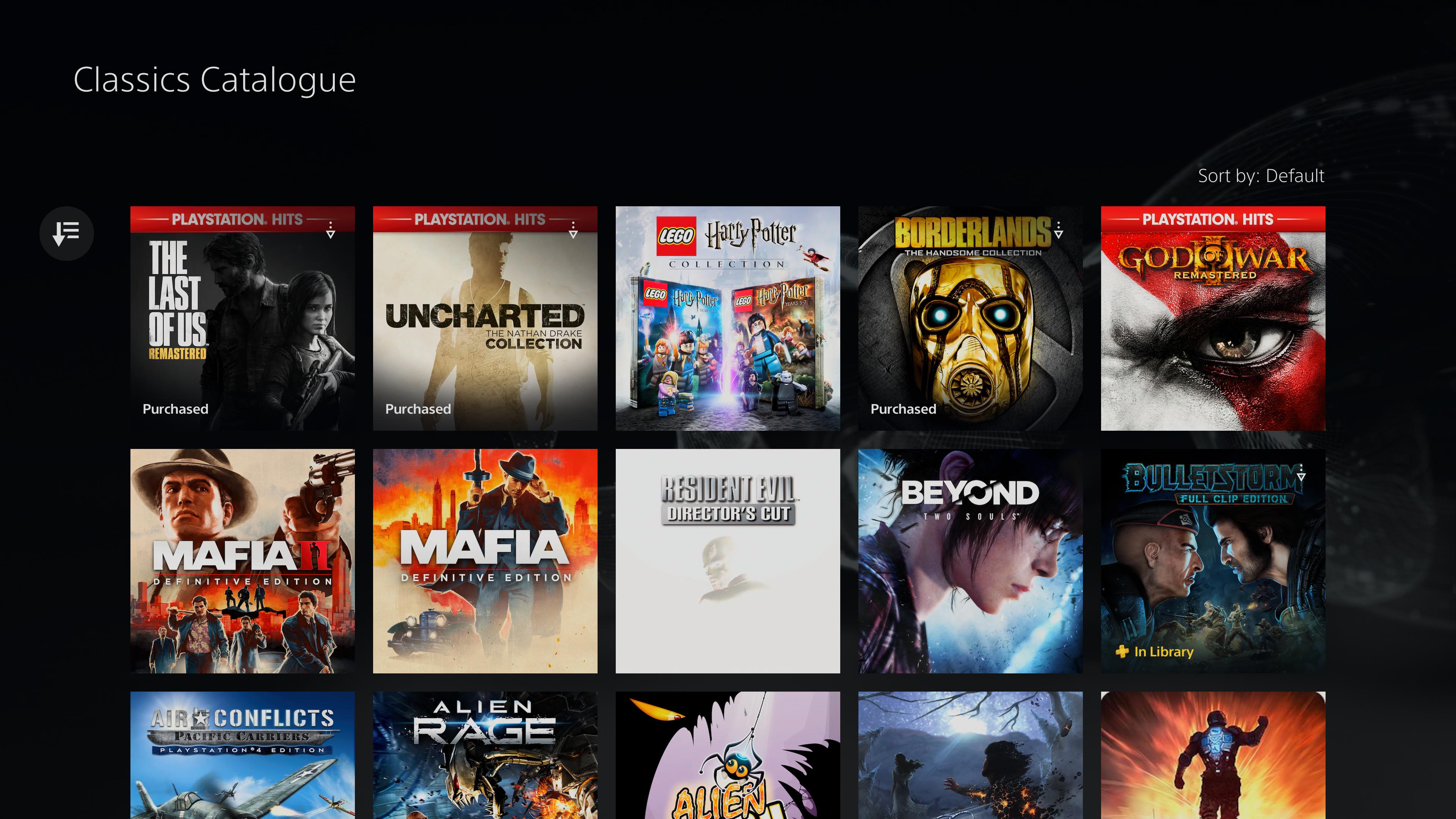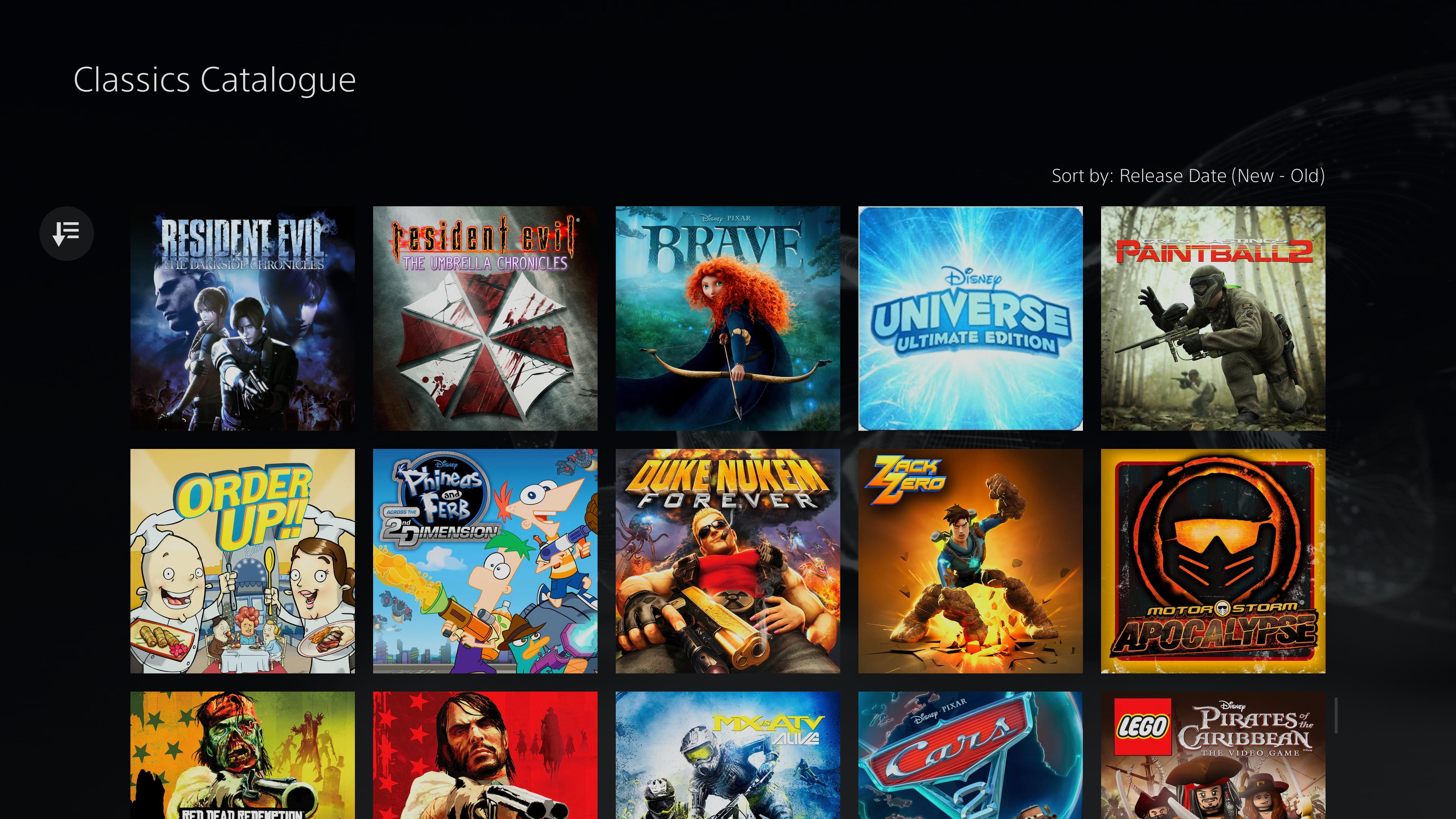PS Plus Essential is basically the Old PS Plus: it costs £49.99 per year and you get the usual monthly games, the online multiplayer access, the extra discounts in the digital store, and all the other old bits and bobs like cloud storage for your saves and the pretty nice assortment of PS Plus Essential games that arrived with the PS5. The other two tiers are the new things. The next one up is PS Plus Extra, which costs £83.99 per year and gets you all of the above, plus a “Game Catalogue”. The top tier meanwhile, PS Plus Premium, costs £99.99 per year and gets you all that plus the ability to cloud stream some games, play some demos, and get access to another collection of games, this one called the “Classics Catalogue”. It is probably fair to say that the two catalogues are what will matter most to most people, and it’s also probably fair to say these two catalogues are where things stop making quite as much sense. You take a look at the very long, very weird list of games you can get with Extra or Premium, and try to pin that lot down. Starting with Extra, there’s some good stuff here: acclaimed indies like Soma and Outer Wilds, modern, third-party blockbusters like Assassin’s Creed Valhalla and Guardians of the Galaxy, a few legendary first-party ones like Shadow of the Colossus, and those lovely mid-tier, multiplayer or PvE games that are such brilliant fits for subscription services, like Space Hulk: Deathwing and Vermintide 2. There are also hundreds - hundreds - of games that you might categorise under “other”. Games that you may not have heard of. Games that, after asking around a bit, I’m not sure anyone here has heard of. This is, first of all, brilliant, because it’s very eccentric Sony to do that, and eccentric Sony is probably Sony at its best. It is weird, though, and besides appeasing people like me who just like a bit of chaos to their corporate decision-making, it’s not clear how this really benefits anyone. It makes the Game Catalogue feel a bit like a bargain bin, where you have to sift through mounds of shovelware to maybe find a gem. Or maybe it’s like an auction, where there’s a really valuable vase coming up but you have to buy the whole drawer of smashed plates and 30-year-old mugs and some creepy little porcelain pig that comes with the lot. That sense of jumble-sale, turn-out-your-pockets, dig out a box from grandad’s attic-style curation is only added to by the Classic Catalogue of PS Plus Premium. Again: some gems! Jumping Flash! Ape Escape! Hotline Miami! But also a bafflingly vast array of licensed film tie-ins: Cars Race-o-Rama, Brave: The Video Game, Tron: Evolution, more. Not satisfied? How about a range of floating, disconnected sequels like, um, Epic Mickey 2, Greg Hastings Paintball 2, Samurai Warriors 4, Ninja Gaiden 3, and several but definitely not all of the Dynasty Warriors games. There are other quirks. A lot of the Classics - 350-odd of the 400-odd apparently - are PS3 games you can only play via cloud streaming, which is not always ideal, and also quite strange when you normally associate cloud-streamed games with the bleeding edge. The UI is a bit all over the place: if you sort a list by “newest first” you’ll get 1999’s Ape Escape first, ahead of 2011’s Batman: Arkham City, say, that’s about halfway down the list. Presumably that’s because Sony’s counting the old games recently made available again as “newer”, but it’s not too helpful. The search function is separate from the catalogue list pages (there is a separate list of games tucked away in a separate part of the menus) and there’s no way to just view all the games from all collections in one big list - several are missing, only showing up when you start to filter by genre. That list, also, is missing the entirety of Sony’s handheld catalogue - nothing from PSP or Vita, aside from Echocrome (also on PS3 cloud streaming) and Super Stardust Portable - which is a tragedy. Some pointed to the slightly excessive number of asterisks in that initial reveal of the launch lineup - I think we got up to four, as though Sony was following up game names with a random f-bomb - and after launch it’s now a little clearer why that is. It’s unusually slapdash, even by eccentric Sony standards. We’ve had a few analogies now but I’ll throw in just one more. Receiving these two catalogues together is, to me, a bit like being 13 years old, and suddenly gifted your mate’s entire collection. It’s very generous - a bit too generous, really - and above all, after the initial glee of discovering you now have all this, flicking through the many cracked boxes and scratched-but-just-about-playable discs makes you feel a bit sad. I’m sure someone’s very personal, cherished memories are tied to this giant bundle of games - but they’re not mine. And I feel bad for saying I wouldn’t pick many of them myself.





